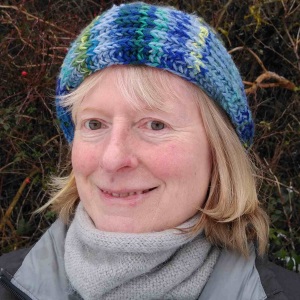Links to external sources may no longer work as intended. The content may not represent the latest thinking in this area or the Society’s current position on the topic.
Continuous-time quantum computing and simulation: perspectives and challenges
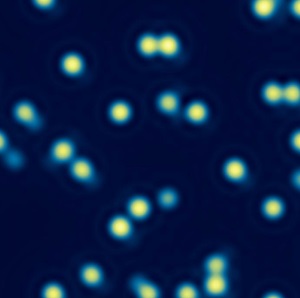
Theo Murphy international scientific meeting organised by Dr Viv Kendon, Sir Peter Knight FRS and Professor Andrew Daley.
Developing experiments capable of useful simulations of quantum systems and computation using native Hamiltonians needs highly optimised hardware and software, to extract the best performance from state-of-the-art quantum engineering. This meeting brought together experts from different research areas to share ideas and further develop UK strength in this important future quantum technology.
Recorded audio of the presentations will be available on this page after the meeting has taken place.
Enquiries: contact the Scientific Programmes team
Organisers
Schedule
Chair

Professor Stefan Kuhr, University of Strathclyde, UK

Professor Stefan Kuhr, University of Strathclyde, UK
Professor Stefan Kuhr is Head of the Optics Division at the University of Strathclyde and an expert in experimental cold atom physics. He is known for his pioneering work on single-atom detection in optical lattices using quantum-gas microscopes, and for his work on quantum-non demolition photon measurement. Kuhr has published nine Nature and Science papers, two Nature Physics and eight Physical Review Letters. He has held an ERC Starting Grant and he is a Fellow of the Institute of Physics.
| 08:05 - 08:35 |
Quantum simulation with ultracold atoms in optical lattices
During the last fifteen years, ultracold atoms in optical lattices have emerged as very versatile and powerful Quantum Simulators to study the many-body physics of interacting particles in periodic potentials. Not only can they faithfully reproduce many prototypical effects from condensed matter physics, they also enable radically new systems with fascinating physics and hold promise for wider quantum information applications. After a brief review of fundamental properties and key experiments that already reach far beyond what can be computed classically, this talk will present an outlook into current and coming developments for realizing more complex lattice geometries. 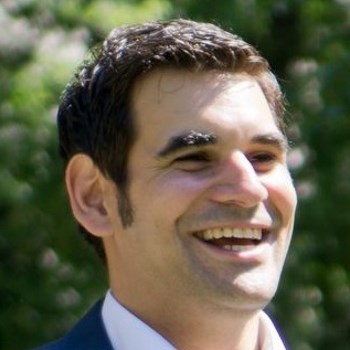
Dr Ulrich Schneider, University of Cambridge, UK

Dr Ulrich Schneider, University of Cambridge, UKDr Ulrich Schneider is an experimental physicist studying quantum simulation and many-body physics using ultracold atoms in optical lattices. He is a reader in many-body physics at the Cavendish Laboratory of the University of Cambridge and a fellow of Jesus College Cambridge. Earlier positions include the Ludwig-Maximilians Universität in Munich and the Johannes-Gutenberg Universität in Mainz. He has worked extensively on the non-equilibrium dynamics in optical lattices and the realisation of many-body localisation. Other works include studies of quantum transport, the dynamics of a quantum phase transition, fermionic Mott insulators, and Negative Absolute Temperatures. He also developed interferometric probes for topology and quasicrystalline potentials for ultracold atoms. He is the winner of the 2015 Rudolf-Kaiser prize and holds an ERC starting grant. He has acted as guest editor for Annalen der Physik and as organiser of several international conferences, including a Royal Society Discussion Meeting on MBL in 2017. |
|
|---|---|---|
| 08:45 - 09:15 |
Rydberg quantum optics
This talk will begin with a brief review of the attractive features of Rydberg atoms for applications in quantum technology (CS Adams et al., arXiv:1907:09231), with a particular emphasis on single photon sources, photon gates and continuous-time quantum processors. Subsequently, the details of two experimental platforms being pursued in Durham will be discussed: First arrays of light-matter interfaces with quasi-deterministic control of photon-photon interactions (H Busche et al., Nature Phys.), and second arrays of individual Sr atoms (NC Jackson et al., arXiv:1904:03233). 
Professor Charles Adams, Durham University, UK

Professor Charles Adams, Durham University, UKCharles Adams is Professor of Physics at Durham University and the founding Director of the Joint Quantum Centre (JQC) Durham-Newcastle. He comes from Rochdale and did an undergraduate degree in Physics at Hertford College, Oxford. Subsequently, he did a research masters in Canada followed by a PhD at Strathclyde University, where he developed the first single-frequency Ti:sapphire laser which became a successful product. He did post-doctoral work on atom optics at Konstanz and on laser cooling and trapping at Stanford before becoming a lecturer in Durham. In 2014 he was awarded the IOP Thomson medal for pioneering the field of Rydberg quantum optics. He is a co-author of two books, Optics f2f (OUP 2019) and Rydberg Physics (IOPP 2018). |
|
| 09:35 - 09:45 | Discussion | |
| 10:00 - 10:30 |
Quantum many-body physics with arrays of single Rydberg atoms
This talk will present recent progress in the use of arrays of single atoms held in optical tweezers, and interacting strongly with each other when excited to Rydberg states. This platform provides an almost arbitrary control over the geometry of single-atom assemblies in 1, 2 and 3 dimensions, with up to about 100 atoms, and is ideal to realise quantum spin models with various types of interactions, such as the Ising or the XY models. 
Dr Thierry Lahaye, Institut d’Optique, CNRS, France

Dr Thierry Lahaye, Institut d’Optique, CNRS, FranceThierry Lahaye studied Physics at Ecole Normale Superieure in Paris. He then did his PhD at Laboratoire Kastler Brossel, under the supervision of Jean Dalibard, working on the evaporative cooling of a magnetically guided atomic beam. In 2006 he joined Tilman Pfau’s group in Stuttgart, Germany, as a post-doctoral researcher, and there he studied dipolar quantum gases of Chromium atoms. He was hired by CNRS as a researcher in 2008, and since 2012 he has been working at Institut d’Optique in Palaiseau, France, in the group led by Antoine Browaeys, on quantum simulation experiments using arrays of individual Rydberg atoms. |
|
| 10:15 - 10:30 | Discussion | |
| 10:30 - 11:00 | Coffee | |
| 10:45 - 11:15 |
Engineering programmable spin interactions with atoms and photons
Photon-mediated interactions among atoms coupled to an optical cavity are a powerful tool for engineering quantum many-body Hamiltonians. Emily will present observations of dynamics of spins evolving under continuously tunable Heisenberg models, where the relative strength and sign of spin-exchange and Ising couplings are controllable parameters. The interaction dynamics manifest as rotations of large effective spins in a mean-field picture, as well as a spin-mixing process seeded by quantum fluctuations, which in principle generates a highly entangled twin Fock state. The optical access afforded by a near-concentric cavity geometry enables spatially-dependent addressing and imaging with micron-scale resolution, allowing the implementation of initial states designed for Hamiltonian tomography. Whereas the single-mode cavity most naturally mediates all-to-all couplings, she will also discuss progress in generalizing to control the distance-dependence of the interactions. 
Emily Davis, Stanford University, USA

Emily Davis, Stanford University, USAEmily Davis is currently a graduate student in the Schleier-Smith lab at Stanford University. There, she built an experiment that studies nonlocal, photon-mediated interactions between cold rubidium atoms in an optical cavity. |
|
| 11:30 - 11:45 | Discussion | |
| 12:15 - 12:30 | Discussion |
Chair

Dr Stephen Till, DSTL, UK

Dr Stephen Till, DSTL, UK
Stephen Till is a Technical Fellow in the Defence Science and Technology Laboratory (Dstl Porton Down). He has worked as a theoretician in Dstl and its antecedent agencies, including the Royal Signals and Radar Establishment, following post-graduate research into molecular scattering theory. More recently, he has used quantum mechanics to simulate a wide range of solid state and molecular materials. This has led him to understand and design practical electronic and electro-optic devices, including novel laser sources and EO materials for defence applications. A significant part of his work has concerned laser-materials interaction including bio-effects consequent upon retinal exposures to lasers and this underpinned part of the recently revised ANSI Z136.1 laser safety standards. Over the last three years he has been instrumental in establishing the UK National Quantum Technology Programme and the UK MOD quantum technology projects.
| 12:30 - 13:00 |
Quantum optimisation
With the current progress in building quantum devices we have now entered the era of NISQ (near-term noisy intermediate scale qubit). It is a main open question whether quantum devices with qubits that are operated in a noisy regime and in the absence of error correction can achieve any advantage compared to classical computation. Dr Wolfgang Lechner will discuss recent developments in adiabatic quantum computing or quantum annealing which aims at solving classical optimisation problems with noisy qubits and Hamiltonian dynamics. In particular, he will discuss non-adiabatic method to improve adiabatic quantum computation. 
Dr Wolfgang Lechner, University of Innsbruck, Austria

Dr Wolfgang Lechner, University of Innsbruck, AustriaWolfgang Lechner received his PhD in Vienna under supervision of Professor Christoph Dellago in computational physics. For his postdoc he moved to Amsterdam to work with Professor Peter Bolhuis on non-equilibrium statistical mechanics. In 2012 he joined Professor Peter Zoller's group in Innsbruck where he contributed to the fields of quantum simulation and quantum computing. In 2017 he established his own research group at the University of Innsbruck dedicated to the development of quantum algorithms for optimisation and machine learning. |
|
|---|---|---|
| 13:15 - 13:45 |
Continuous time quantum computing beyond adiabatic: quantum walks and fast quenches
While the adiabatic theorem provides a useful theoretical handle to understand quantum computing in continuous time, solving hard problems adiabatically would require an exponentially long runtime and therefore unless P=NP will require either an exponentially long coherence time or a mechanism to restore coherence. On the other hand, algorithms which only succeed with an exponentially small probability may still be useful on more realistic devices, for which coherence time either does not scale, or scales only mildly. One example of such an algorithm is a continuous time quantum walk applied to hard optimisation problems, where a system is evolved with a fixed (in time) Hamiltonian. Dr Nicholas Chancellor finds that for small Sherrington-Kirkpatrick spin glasses, such an algorithm delivers a scaling which is less than the square root of the system size expected from Grover like simple search dynamics, he attributes this superior performance to the fact that the energy landscape of real optimization problems is correlated, and provide evidence that these correlations are crucial to being able to build practical algorithms, and argue why the quantum walk algorithm. In hindsight this is somewhat unsurprising, since these correlations are necessary for any classical algorithm to perform better than random guessing. Dr Chancellor also discusses the underlying dynamics which allow this and other far-from-adiabatic algorithms to work. Finally he discusses extensions of the work, which include a technique his group have called pre-annealing for which they observe scaling of their continuous time quantum algorithm which is competitive with a cutting edge gate based hybrid quantum/classical gate model algorithms. It is likely that by adding a hybrid component these algorithms could be made more efficient and beat the current state of the art. 
Dr Nicholas Chancellor, Durham University, UK

Dr Nicholas Chancellor, Durham University, UKNicholas Chancellor is an EPSRC UKRI Innovation fellow at Durham University. Nicholas specialises in continuous time quantum computing, in particular quantum annealing and hybrid quantum/classical algorithms using continuous time hardware. Nicholas helped pioneer the reverse annealing technique which is currently available on the commercial quantum annealers produced by D-Wave Systems Inc. with his single author paper 'Modernizing Quantum Annealing using Local Searches'. He also wrote one of, if not the first papers showing the use of quantum annealers for thermal sampling. Prior to being awarded a fellowship, Nicholas worked as a postdoc for Viv Kendon. Prior to that he was a postdoc at UCL, which focused on experimental quantum annealing. This postdoc was supervised by Andrew Green and Gabriel Aeppli, and he also worked closely with Paul Warburton. Nicholas Chancellor attained his PhD from the University of Southern California under the supervision of Stephan Haas. Up to date information about Nicholas's work can be found at: http://nicholas-chancellor.me. |
|
| 14:00 - 14:15 | Discussion | |
| 14:30 - 15:00 |
Continuous variables quantum complex networks
Experimental procedures based on optical frequency combs and parametric processes are able to produce quantum states of light involving large numbers of modes -in the frequency and time domain- that can be mapped and analyzed in terms of quantum complex networks. The protocols, along with mode selective and multimode homodyne measurements, in fact, allow for the implementation of reconfigurable entanglement structures that can go beyond the regular geometry of cluster states and implement graphs with more complex topology. Quantum complex networks, mimicking real-world structures, can then be explored to study quantum transport and tailored quantum communication and information protocols. Additional mode-selective non-Gaussian operations have been recently demonstrated. When applied to the graph structure entanglement properties and non-Gaussian features are spread out with particular geometrical properties. 
Dr Valentina Parigi, Laboratoire Kastler Brossel, Sorbonne Université, France

Dr Valentina Parigi, Laboratoire Kastler Brossel, Sorbonne Université, FranceValentina Parigi obtained her PhD at LENS (European Laboratory for Non-Linear Spectroscopy) in Florence in 2009. During her PhD she worked on generation, manipulation and characterisation of non-classical states of light and she realised the first experimental test on quantum commutation rules. As a post-doc she has been involved in the experimental realisation of strong non-linear effects mediated by Rydberg atoms at the Institut d’Optique in Palaiseau and she worked in the atomic quantum memory group at Laboratoire Kastler Brossel (LKB) in Paris. In 2015 she joined the Multimode Quantum Optics team at LKB as Associate Professor. Her interests range from the foundations of quantum mechanics to the experimental implementation of basic tools for quantum information technologies. She is currently involved in the implementation of complex quantum networks in a multi-mode continuous-variables scenario (http://www.lkb.upmc.fr/quantumoptics/quantum-complex-networks/) supported by an ERC Consolidator Grant.
|
|
| 14:45 - 15:00 | Discussion | |
| 15:00 - 15:30 | Tea | |
| 16:00 - 16:15 | Discussion |
Chair
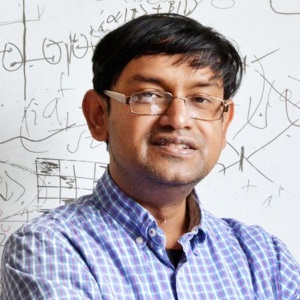
Professor Sougato Bose, University College London, UK

Professor Sougato Bose, University College London, UK
Professor Sougato Bose has pioneered the study of quantum communications through spin chains, as well as several proposals on generating and probing macroscopic quantum superpositions. More recently, he has suggested a method to detect the quantum nature of gravity through the entanglement of mesoscopic masses. Working in the areas of quantum information, quantum optics and quantum many-body physics, he has published over 150 journal articles, including 34 in Physical Review Letters and three in Nature Communications. He was awarded the Maxwell Medal and Prize of the UK Institute of Physics in 2008, an EPSRC Advanced Research Fellowship 2006–2011, a Royal Society Wolfson Research Merit Award 2007–2012 and an ERC Starting grant 2012–2017. After completing his PhD in 2000 from Imperial College under the supervision of Sir Peter Knight, he held a junior research fellowship at St John's College, Oxford, a postdoctoral fellowship at Caltech, Pasadena, USA. Since 2003 he has been a member of Department of Physics and Astronomy at University College London (UCL).
| 08:00 - 08:30 |
Quantum simulations and quantum networks with trapped ions
In the first half Dr Ben Lanyon will present a trapped-ion quantum simulator. His approach is based on a 1D string of trapped atomic calcium ions, between which his group can turn on tunable-range interactions using lasers. He achieved full individual qubit (ion) control and entangled states for up to 20 qubits (N Friis et al., Phys. Rev. X., 2018). Dr Lanyon presents the system capabilities, challenges and recent results on extending the system to 50 qubits. In the second half Dr Lanyon will present his recent results on interfacing these registers of trapped ions with travelling photons. In particular, using cavity-QED techniques the group achieve on demand entanglement between the ion-qubit state and a travelling photon with probability of over 50%. Secondly, he observes that the entanglement remains after the photon travels over 50km of optical fibre (V. Krutyanskiy et al., npj Quantum Information, 2019). This opens up the possibility of entangling these registers of ions, hundreds of kilometres apart and more. 
Dr Ben Lanyon, Institut für Quantenoptik und Quanteninformation & University of Innsbruck, Austria

Dr Ben Lanyon, Institut für Quantenoptik und Quanteninformation & University of Innsbruck, AustriaBen Lanyon was born in 1981 in the UK and received his undergraduate and Masters degrees in Physics from the University of Warwick, UK, in 2003. In 2009, Ben received his PhD from the University of Queensland, Australia. For his PhD thesis, Ben contributed to developing and experimentally demonstrating new techniques for the field of quantum information science, using single and entangled photons. This work was done in the group of Professor Andrew White. Ben came to Innsbruck in 2009 to carry out research on quantum information science with trapped atomic ions, in the group of Rainer Blatt. Ben has since been awarded a Marie Curie postdoctoral fellowship (2010) and an Austrian Start award (2015). Ben is now setting up his own research team at IQOQI: the Institute for Quantum Optics and Quantum Information. His work focuses on developing and demonstrating new techniques to interface light and matter at the quantum level, to interface different types of quantum systems and to enable the distribution of entanglement over large distances. |
|
|---|---|---|
| 08:45 - 09:15 |
Quantum dots for quantum simulations
Quantum dots, quantum emitters in a semiconductor matrix, are most often proposed as a bright and efficient source of single photons for many quantum technologies. And, as Professor Ruth Oulton has demonstrated previously, a near-perfect single photon source goes hand-in-hand with potentially deterministic interactions with input photons. However, it is the spin degree of freedom in their ground state which gives them the greatest scope for quantum simulations. Photons input into a QD device can be entangled with the long coherence time spin system, and protocols to produce entangle chains of photons (1D cluster states) have already been demonstrated. Professor Oulton will discuss how one may entangle very long coherence time photons with the spin. Reflecting the long photon from a quantum dot spin precessing in a magnetic field results in a phase modulation of the photon wave function in time, with periodic entanglement resulting. Professor Oulton will discuss the potential of spin-photon entangled states as building blocks for analogue and digital quantum simulations. 
Professor Ruth Oulton, University of Bristol, UK

Professor Ruth Oulton, University of Bristol, UKRuth Oulton’s field of research involves the study of nanoscale semiconductor devices that enable the exchange of “quantum” information between a single electron and a single photon. The idea is that they can use the rules of quantum mechanics to perform computing and measurements in a completely new way. She take ideas from quantum theory and information science, bring them together with what we are beginning to understand about semiconductors on the nanoscale, and to make working quantum devices that engineers will use as part of their everyday toolkit. In her recent work she studies single electron spins in atomic-like systems, and studies how the angular momentum of the photon and spin exchange information, and how photonic design can influence this. In other interdisciplinary side projects she studies the role of photonic structures in plants such as seaweed and begonias. |
|
| 09:30 - 09:45 | Discussion | |
| 10:00 - 10:30 |
Quantum annealing with superconducting flux qubits
Quantum annealing makes less stringent demands on qubit coherence than gate-based approaches, thereby enabling proof-of-principle demonstrations of annealers with around 2000 superconducting flux qubits. Furthermore by capacitively shunting the flux qubit and reducing the circulating current one can achieve both high coherence and low leakage, making the flux qubit an excellent approximation to a two-level quantum system. Nevertheless most measurements on experimental annealers are plagued by noise, and the role of coherence in quantum annealing is not currently understood. Professor Paul Warburton will describe his group’s experimental and analytical work on both understanding coherence in flux qubit annealers and how to optimise their use for real-world applications in the presence of noise. They have used the Schrieffer-Wolf transformation to extract the Pauli coefficients from quantum circuit models and developed this technique to investigate non-stoquastic Hamiltonians arising from simultaneous inductive and capacitive qubit interactions. They have analysed the extent to which Landau-Zener-Stückelberg oscillations can be used as a coherence metric in the context of quantum annealing. The group has also developed a new method for embedding real-world problems with high qubit connectivity onto hardware graphs of limited degree and show experimentally that this method outperforms rival embedding techniques for annealers in the presence of noise. The research is based upon work supported by EPSRC (grant reference EP/R020159/1) and the Office of the Director of National Intelligence (ODNI), Intelligence Advanced Research Projects Activity (IARPA), via the US Army Research Office contract W911NF-17-C-0050. The views and conclusions contained herein are those of the authors and should not be interpreted as necessarily representing the official policies or endorsements, either expressed or implied, of the ODNI, IARPA, or the US Government. 
Professor Paul Warburton, University College London, UK

Professor Paul Warburton, University College London, UKPaul Warburton is Professor of Nanoelectronics at the London Centre for Nanotechnology and the Department of Electronic and Electrical Engineering at University College London. He is interested in both experimental implementations and applications of quantum annealing using superconducting devices. He is involved in designing novel Hamiltonians which reveal the underlying quantumness of small systems of annealed qubits and/or which can be exploited for applications. His group gave the first demonstration of maximum-entropy inference using an experimental quantum annealer, confirming that information can be extracted from the excited states. He is part of the US-government-funded collaboration 'Quantum Enhanced Optimization'. |
|
| 10:15 - 10:30 | Discussion | |
| 10:30 - 11:00 | Coffee | |
| 10:45 - 11:15 |
Energy-landscape shaping for quantum simulation with cold atoms and in semiconductors
Energy landscape shaping is a way to alter the natural evolution of a quantum system to achieve certain objectives utilising the continuous evolution of the system instead of applying discrete quantum gates and dynamic control. Using spin networks as an abstract model system Dr Sophie Shermer will discuss how to design energy landscapes to control information flow between nodes in various networks. Energy landscape design will be formulated as an optimal control problem and in terms of linear feedback control systems. Various solutions to the optimal control problems arising will be examined in terms of robustness. Robustness of the evolution with regard to uncertainty in system parameters, initial conditions and environmental effects such as decoherence is crucial, and the development of better tools inspired by classical engineering is essential for robust quantum technology. Dr Shermer will discuss classical engineering approaches to robustness and the challenges in applying them to quantum systems, as well as some promising results suggesting that classical limits on robustness need not apply to the latter. Possible implementations of energy landscape control using cold atoms trapped in optical lattices as experimental testbeds for pseudo-spin networks will also be considered. 
Dr Sophie Shermer, Swansea University, UK

Dr Sophie Shermer, Swansea University, UKSophie Shermer is an Associate Professor of Physics at Swansea University, UK. She previously held positions as a Cambridge-MIT (CMI) Research Fellow and Advanced Research Fellow of the UK Engineering and Physical Sciences Research Council (EPSRC) at the University of Cambridge, as a Marie Curie Visiting Professor at Kuopio University, Finland, as well as positions at the Open University and the University of Oregon. Sophie’s research interests range from nano-science at the quantum edge and quantum engineering, especially the design, modelling and characterisation of quantum devices and new paradigms for optimal and robust control, to medical physics and imaging. |
|
| 11:30 - 11:45 | Discussion |
| 12:30 - 13:00 |
Variational quantum algorithms for nonlinear problems
Professor Dieter Jaksch will discuss how nonlinear problems including nonlinear partial differential equations can be efficiently solved by variational quantum computing. This is achieved by utilising multiple copies of variational quantum states to treat nonlinearities efficiently and by introducing tensor networks as a programming paradigm. He will demonstrate the key concepts of the algorithm using the nonlinear Schrödinger equation as a canonical example. He will present numerical results showing that the variational quantum ansatz can be exponentially more efficient than matrix product states and present experimental proof-of-principle results obtained on an IBM Q device. 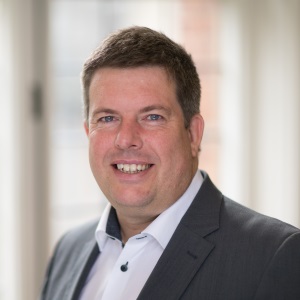
Professor Dieter Jaksch, University of Oxford, UK

Professor Dieter Jaksch, University of Oxford, UKDieter Jaksch is the Head of Atomic and Laser Physics at the University of Oxford. He has worked on strongly correlated quantum systems and their non-equilibrium dynamics since 1998 starting with a proposal for achieving a superfluid to Mott insulator transition in ultracold gases. It was followed by theoretical work that helped laying the foundations of the research field of strongly correlated ensembles of ultracold atoms in optical lattices and realisations of quantum simulators with neutral atoms. His current research interests include developing quantum algorithms for early generation quantum computers, eg, for solving non-linear partial differential equations and optimisation problems, and extending quantum optical techniques towards controlling quantum materials. |
|
|---|---|---|
| 13:15 - 13:45 |
Quantum-assisted machine learning in near-term quantum devices
With quantum computing technologies nearing the era of commercialisation and quantum advantage, machine learning (ML) has been proposed as one of the promising killer applications. Despite significant effort, there has been a disconnect between most quantum ML proposals, the needs of ML practitioners, and the capabilities of near-term quantum devices towards a conclusive demonstration of a meaningful quantum advantage in the near future. In this talk, Dr Alejandro Perdomo-Ortiz provides concrete examples of intractable ML tasks that could be enhanced with near-term devices. He argues that to reach this target, the focus should be on areas where ML researchers are struggling, such as generative models in unsupervised and semi-supervised learning, instead of the popular and more tractable supervised learning tasks. Alejandro focuses on hybrid quantum-classical approaches and illustrates some of the key challenges he foresees for near-term implementations. He will present as well recent experimental implementations of these quantum ML models in both, superconducting-qubit and ion-trap quantum computers. 
Dr Alejandro Perdomo-Ortiz, Zapata Computing, Canada

Dr Alejandro Perdomo-Ortiz, Zapata Computing, CanadaAlejandro did his graduate studies, MA and PhD in Chemical Physics, at Harvard University. Over the past 12+ years, he has worked on the implementation of quantum computing algorithms, enhancing their performance with physics-based approaches while maintaining a practical, application-relevant perspective. Before joining Zapata Computing as a Senior Quantum Scientist, Alejandro was the lead scientist of the Quantum Machine Learning effort at NASA’s Quantum Artificial Intelligence Laboratory (NASA QuAIL). He was also the Co-Founder of Qubitera LLC, a consulting company acquired by Rigetti Computing where he worked after NASA and before his current appointment with Zapata Computing Canada. He also holds an Honorary Senior Research Associate position at University College London and his latest research involves the design of hybrid quantum-classical algorithms to solve hard optimization problems and intractable machine learning subroutines. |
|
| 14:00 - 14:15 | Discussion | |
| 14:30 - 15:00 |
Analogue and digital simulation - parallels and differences
There are many parallels between digital and analogue quantum simulation. For example until very recently, the best digital simulation algorithms used quantum random walks. Using this and other examples, Dr Steve Brierley will explore the similarities and differences between digital and analogue simulation with a view to what each community might learn from the other. 
Dr Steve Brierley, Riverlane, UK

Dr Steve Brierley, Riverlane, UKSteve has over a decade of research experience in quantum information, most recently as a Senior Research Fellow in Applied Mathematics at the University of Cambridge. Steve’s work is at the forefront of software and algorithms for quantum computers and he founded Riverlane to exploit these breakthroughs. |
|
| 14:45 - 15:00 | Discussion | |
| 15:00 - 15:30 | Tea | |
| 15:15 - 16:00 | Panel discussion | |
| 16:00 - 16:15 | Discussion |

